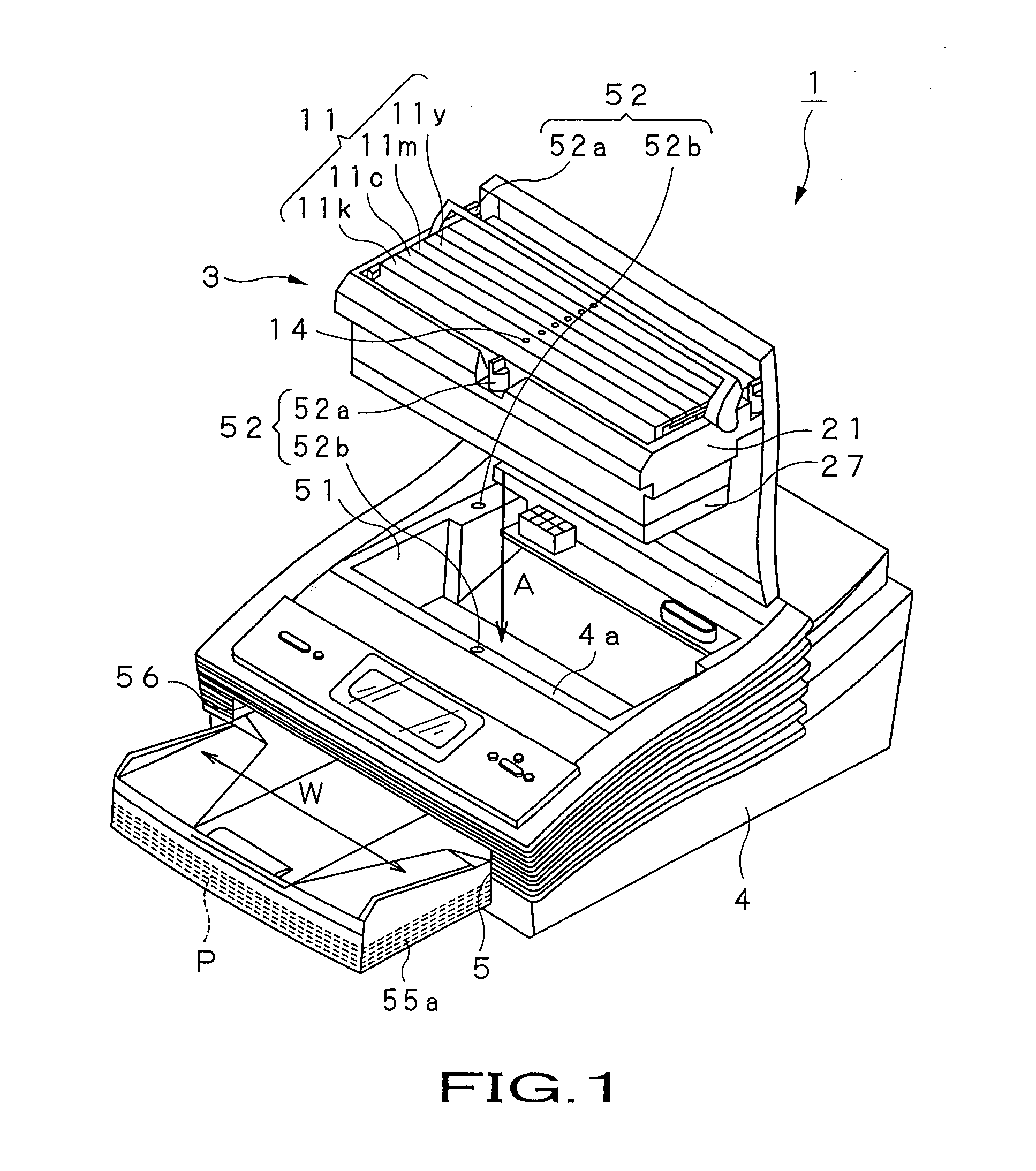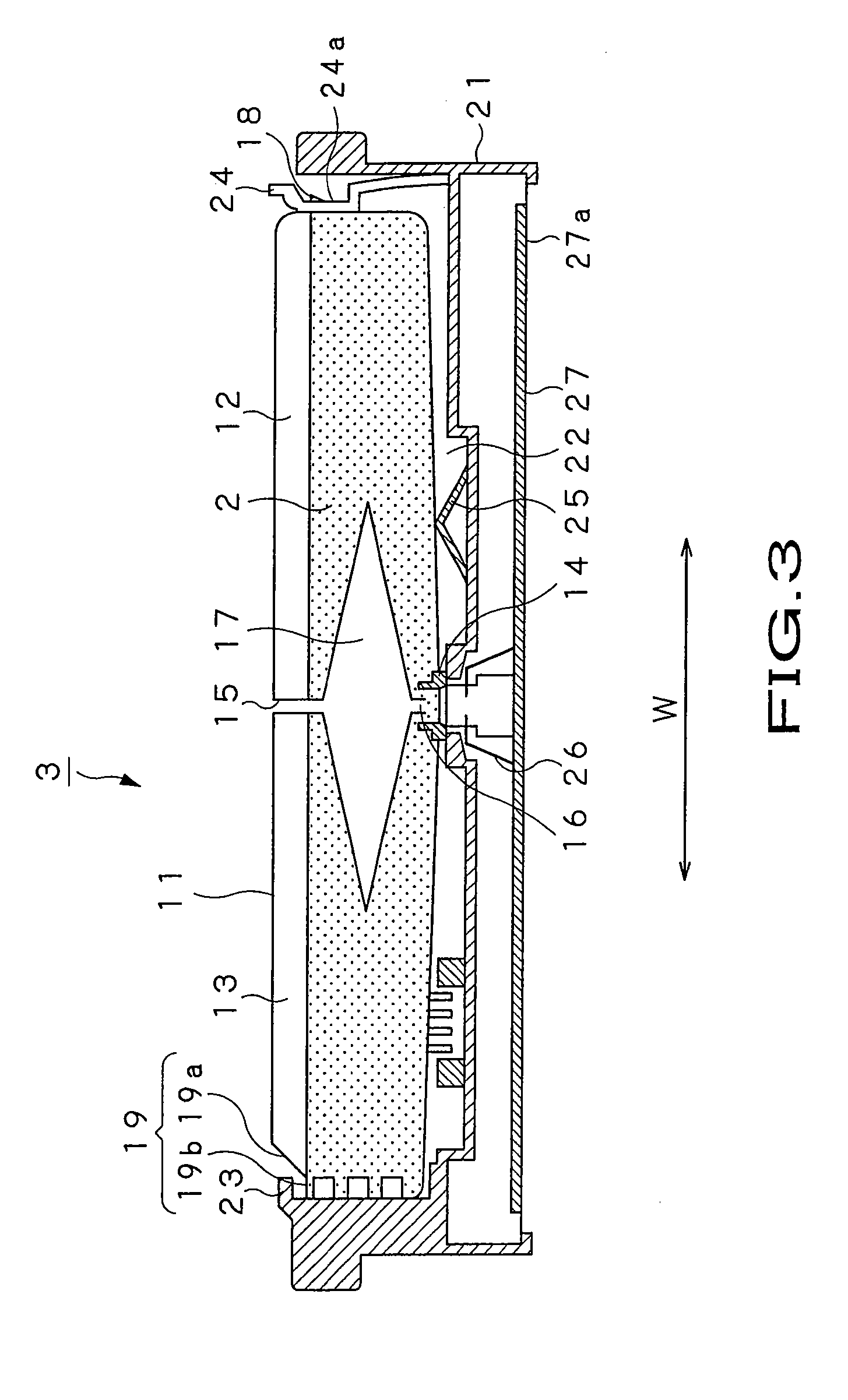Recording liquid, liquid cartridge emitting device and liquid emitting method
- Summary
- Abstract
- Description
- Claims
- Application Information
AI Technical Summary
Benefits of technology
Problems solved by technology
Method used
Image
Examples
example 1
[0194] In Example 1, 3 parts by weight of C.I. Direct Yellow 86, as a dyestuff serving as a colorant, 70 parts by weight of water as a solvent, 5 parts by weight of glycerin, 10 parts by weight of ethylene glycol, and 10 parts by weight of monobutyl diethyleneglycol, as other solvents, and 2 parts by weight of a non-ionic surfactant of the following chemical formula
where m and n are integers not less than 1, with the total addition amount (m+n) of ethylene oxide (abbreviated below to EO) equal to 2, were mixed together to produce an ink precursor. As the surfactant containing the organic compound shown by the general formula 1, NEXCOAT, manufactured by NIKKO CHEMICALS Co. Ltd., having the addition amount of ethylene oxide changed, was used.
[0195] The ink precursor, obtained with the above composition, was agitated for four hours, in a state heated to 60° C. After the agitation, the ink precursor was compulsorily filtered, as the ink precursor was pressurized with a membrane filt...
example 2
[0196] In Example 2, 4 parts by weight of C.I. Direct Blue 199, as a dyestuff serving as a colorant, 65 parts by weight of water as a solvent, 10 parts by weight of ethylene glycol, 10 parts by weight of ethylene glycol, and 10 parts by weight of triethyleneglycol, as other solvents, and 2 parts by weight of a non-ionic surfactant of the organic compound of the chemical formula 1, similar to that of Example 1, with the total addition amount (m+n) of EO equal to 2, were mixed together to produce an ink precursor. An ink was prepared in the same way as in Example 1, except using the ink precursor.
example 3
[0197] In Example 3, 3 parts by weight of C.I. Acid Red 52, as a dyestuff serving as a colorant, 70.9 parts by weight of water as a solvent, 10 parts by weight of monobutyl triethylene glycol, 5 parts by weight of 2-pyrrolidone, and 10 parts by weight of glycerin, as other solvents, and 0.1 part by weight of a non-ionic surfactant of the organic compound of the chemical formula 1, similar to that of Example 1, with the total addition amount (m+n) of EO equal to 4, were mixed together to produce an ink precursor. An ink was prepared in the same way as in Example 1, except using the ink precursor.
PUM
| Property | Measurement | Unit |
|---|---|---|
| Temperature | aaaaa | aaaaa |
| Vapor pressure | aaaaa | aaaaa |
| Surface energy | aaaaa | aaaaa |
Abstract
Description
Claims
Application Information
 Login to View More
Login to View More - R&D
- Intellectual Property
- Life Sciences
- Materials
- Tech Scout
- Unparalleled Data Quality
- Higher Quality Content
- 60% Fewer Hallucinations
Browse by: Latest US Patents, China's latest patents, Technical Efficacy Thesaurus, Application Domain, Technology Topic, Popular Technical Reports.
© 2025 PatSnap. All rights reserved.Legal|Privacy policy|Modern Slavery Act Transparency Statement|Sitemap|About US| Contact US: help@patsnap.com



